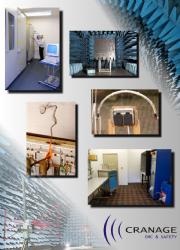 Add My Company
Add My Company
Sign In

The equipment under test shall be set-up as per intended installation with normal earthing arrangements and should be positioned well away from any non-associated structure.
Where possible, all input / output cables shall be connected, glanded and terminated in accordance with methods specified for the installation.
For EUT's with continuous current rating up to 100A per phase, the incoming power line will be connected to the EUT via the Line Impedance Stabilisation Network (LISN). A single / three phase line filter is also used to attenuate electrical interference. An earth strap is bonded to the LISN and connected to the protective earth conductor of the incoming supply. The earth reference point of the LISN is also bonded to the safety earth of the EUT. Earth leakage current due to the LISN will exceed 80mA, therefore RCD protected supplies cannot be used - see note regarding personnel safety.
For EUT's with continuous current rating greater than 100A per phase, the voltage probe method prescribed in CISPR16 shall be used. The incoming power line and protective earth conductors shall be connected to the EUT as per manufacturers installation instructions. This test can be performed on RCD protected supplies but may require measurements to be taken 'out-of-hours' if electrical interference on the incoming supply is significant.
Connection details / requirements of the installation which cannot be fulfilled will be noted by the test engineer on EMC Test Worksheets.
For more information on EMC In-situ Testing talk to Cranage EMC & Safety
Enquire Now
List your company on FindTheNeedle.

